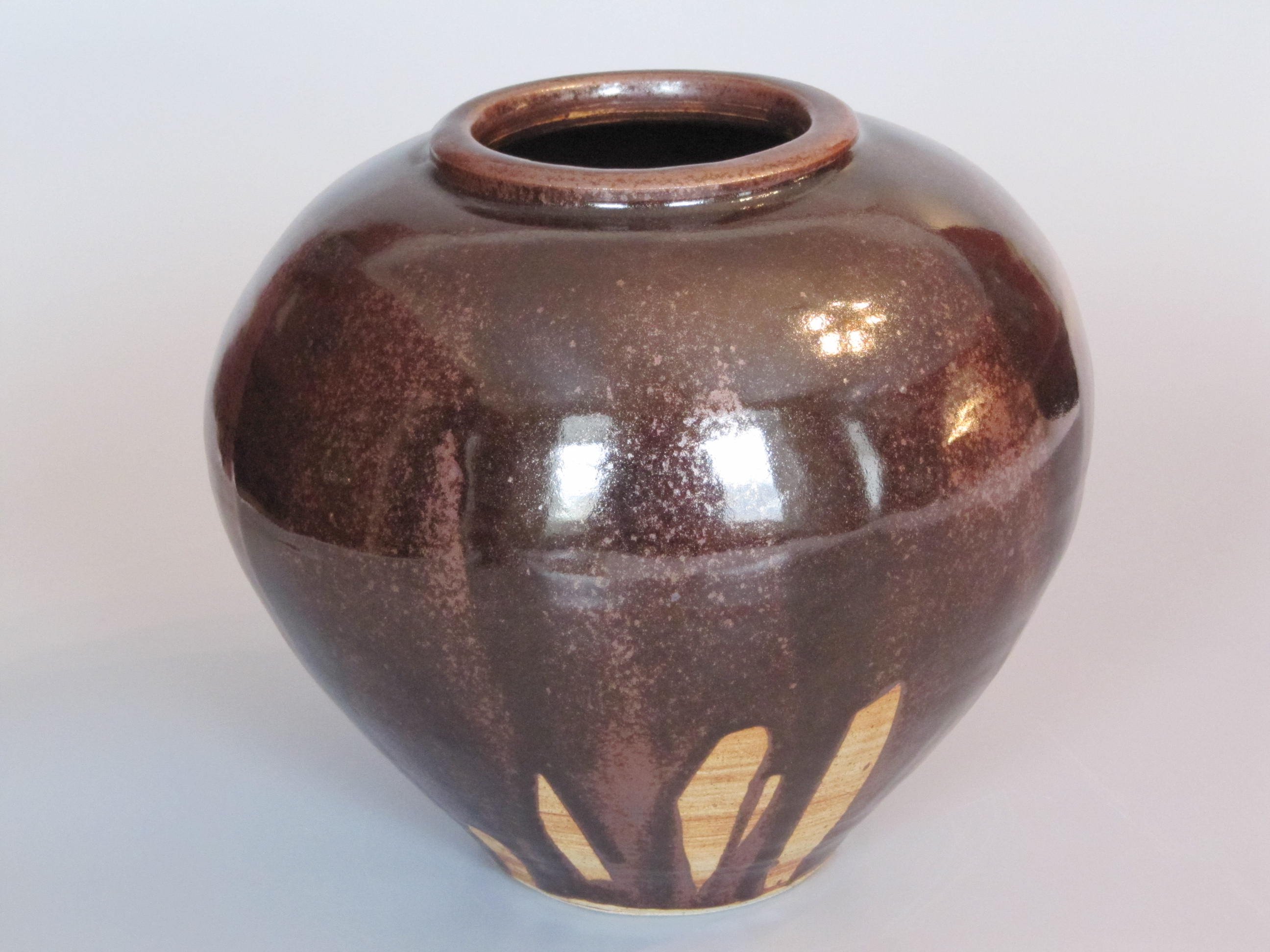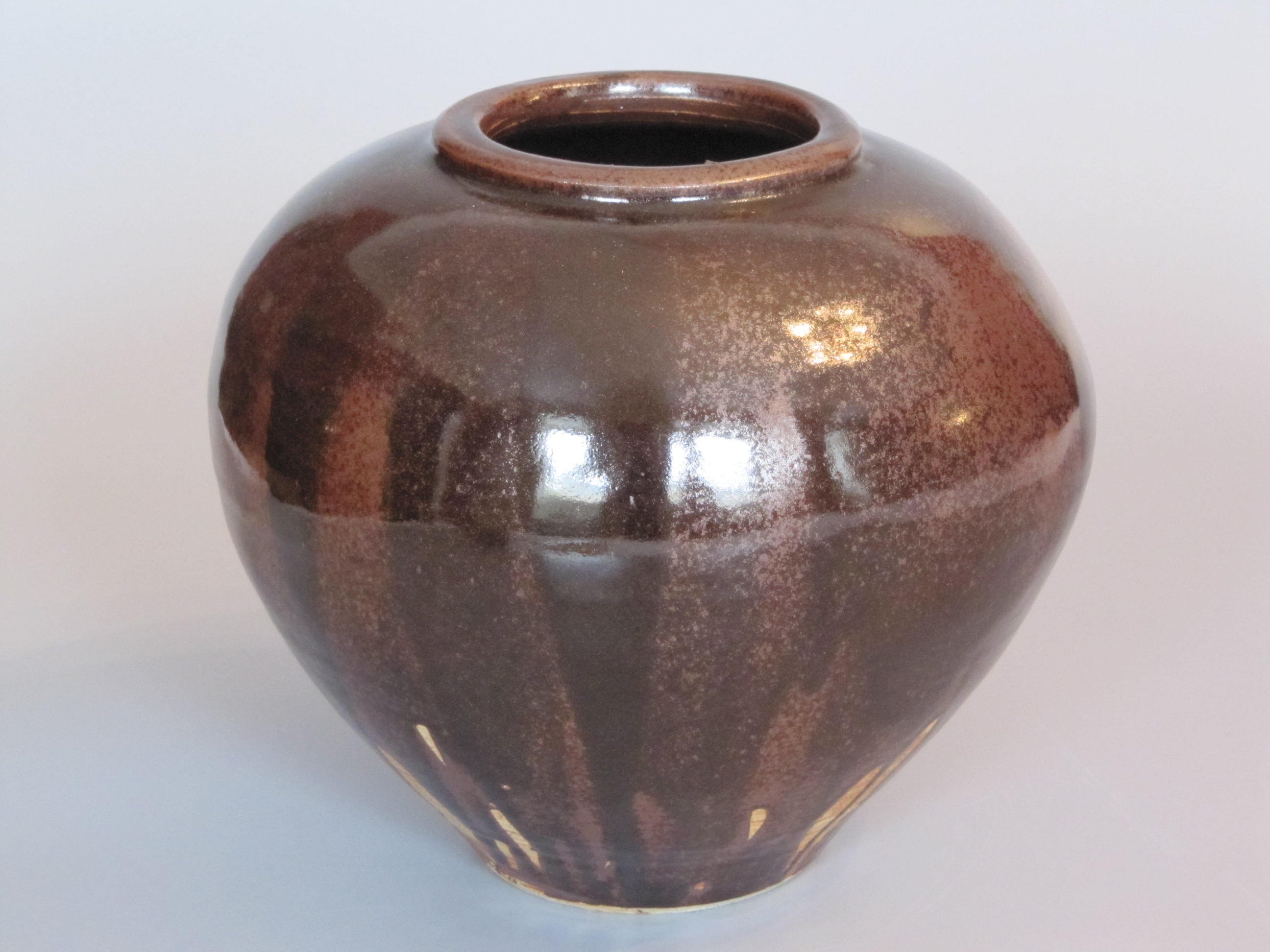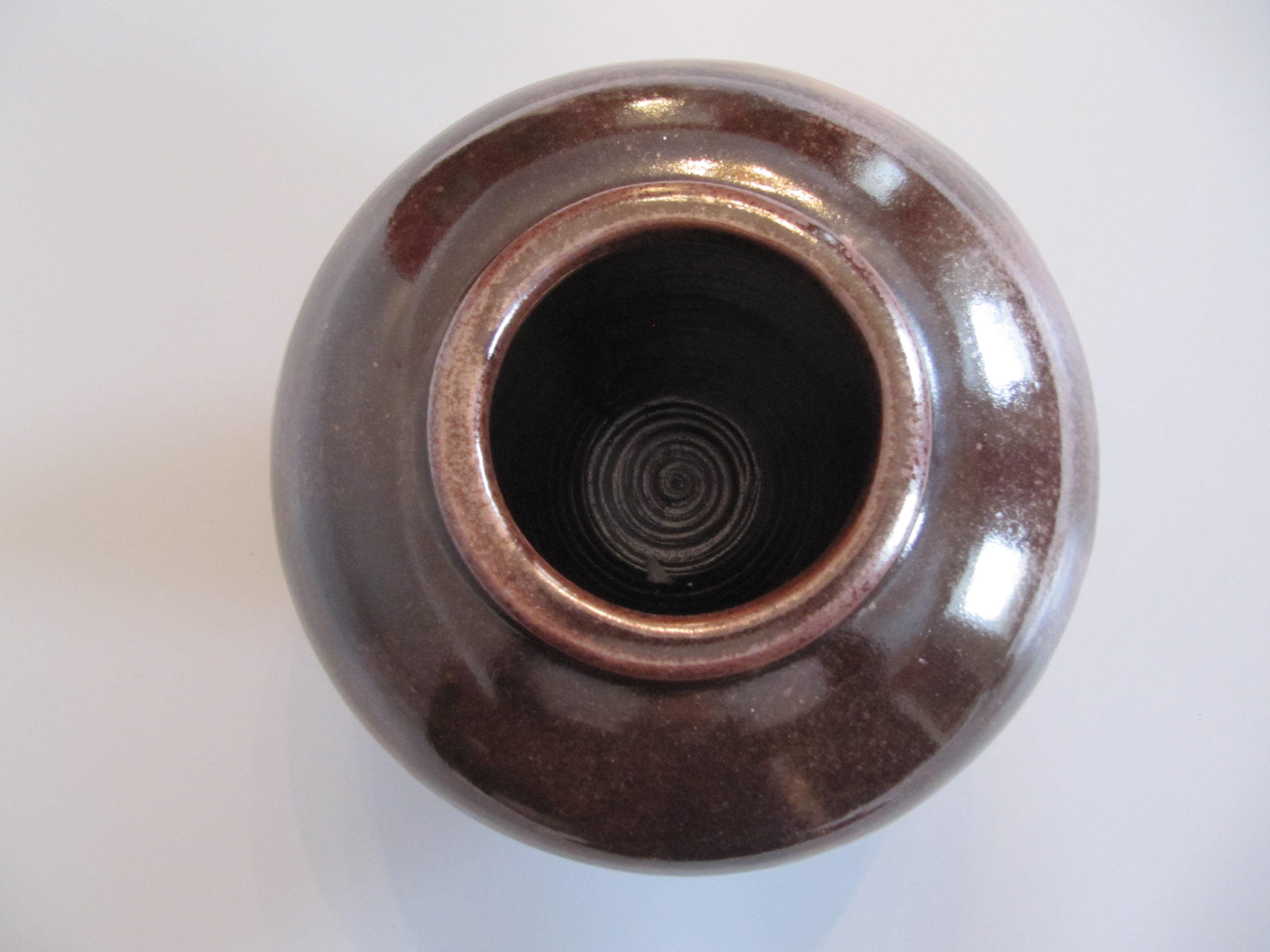19. A Tenmoku glaze pot, by Ursula Mommens



The art collection at St John’s is a layered one, including
a variety of portraits that reflect the history of the college and present the
public image of successive Presidents.
However, over the years works of art have been added to the collection
that speak of the taste of particular Presidents or their partners. When attending lectures or social events in
the Long Gallery of the Lodgings, I’ve enjoyed looking at the landscapes,
portraits and subject paintings along the panelled walls. However my eye has often been caught by the
beauty of the modern ceramics that are also on view. An important group of mid to late
twentieth-century ceramics have their place in the Lodgings as a result of the
keen interest of a former President, William (Bill) Hayes and his wife Joan in
this type of artistic production.
I would like to single out one piece that has always
appealed to me, the Tenmoku glaze pot by the long-lived Ursula Mommens
(1908-2010). One can barely resist
reaching out to touch and experience the materiality of its shape and texture,
while the variegated warm to dark shades of brown with sudden flashes of ochre
make it visually compelling.
The Japanese term ‘Tenmoku’ is used to describe iron glazes
that fire to a dark brown or blackish colour, a glaze being a vitreous coating
applied to the surface of a ceramic to make it impermeable, or to allow for
decorative effects. ‘Tenmoku’ can also
refer to a specific vessel, the low-footed tea bowls traditionally used in
China, which had become fashionable in Japan by the fifteenth century (see the useful information provided by the Kyoto National Museum). Japanese tenmoku tea bowls can take on
different shapes, but they characteristically feature a strikingly dark glaze.
This struck a chord with modernist artists and designers. Bernard Leach (1887-1979), often described as
‘the father of British studio pottery’, was enchanted by Japanese culture and
craftsmanship, re-creating Tenmoku glazes from the 1920s in his influential
production.
Ursula Mommens experimented widely in her career as a
potter, looking beyond the Leach ‘anglo-oriental’ aesthetic to early
Mediterranean sources, whether Cretan, Grecian or medieval Hispano-Moresque. It
was in the 1950s that she became especially keen on iron glazes. There is a
lyricism and animation inherent in this piece, as we trace the gestural
brushwork of the glazes; looking into its depths, we can see an incised spiral
motif evoking ancient symbolic forms. This pot speaks of the maker’s
creativity, cultural alertness and hands-on virtuosity. While I knew that Mommens (born Ursula
Darwin) was a direct descendant of both Josiah Wedgwood and Charles Darwin,
I’ve only recently learned of her intrepid and restless character. She set up a
pottery in Bali to aid regional development in 1973, and travelled subsequently
to Peru, Mexico, Nigeria and elsewhere, culminating in a journey to India at
the age of eighty eight. It’s wonderful that Bill and Joan Hayes chose to
acquire this beautiful ceramic, bringing an extraordinary woman artist into the
college’s collection. And it is a
pleasure to highlight this piece just as the college celebrates Bill’s 90th
birthday.
Postscript on the acquisition of the pot with a personal recollection of Ursula Mommens:
Professor Peter Hacker has kindly furnished important information on the making and acquisition of this beautiful pot, and on the ceramics collection in the Lodgings. He notes that most of the modern ceramics were bought by Sylvia and Peter Hacker for Bill and Joan Hayes. In this case, as he recalls, the pot was purchased directly from the artist in 1988: “We had travelled to visit Ursula Mommens in her home in Kent. We spent the day with her, eager to hear her reminiscences of Stanley William Hayter with whom she had spent a three month holiday in Spain with her first husband Julian Trevelyan who was a member of Hayter's Atelier 17 and a close friend of Hayter. We arrived just when she had finished a firing for which she had stayed up all night (she was in her eighties). We lunched with her and bought the pot for the Lodgings from her. We also invited her to visit us in Oxford when the Hayter exhibition opened…. She did indeed visit us, and stayed with us overnight. We also gave her tea in the St John's senior common room after we had been to the Ashmolean.”
 Professor Catherine Whistler, Supernumerary Fellow in Art History and Keeper of Western Art at the Ashmolean Museum
Professor Catherine Whistler, Supernumerary Fellow in Art History and Keeper of Western Art at the Ashmolean Museum